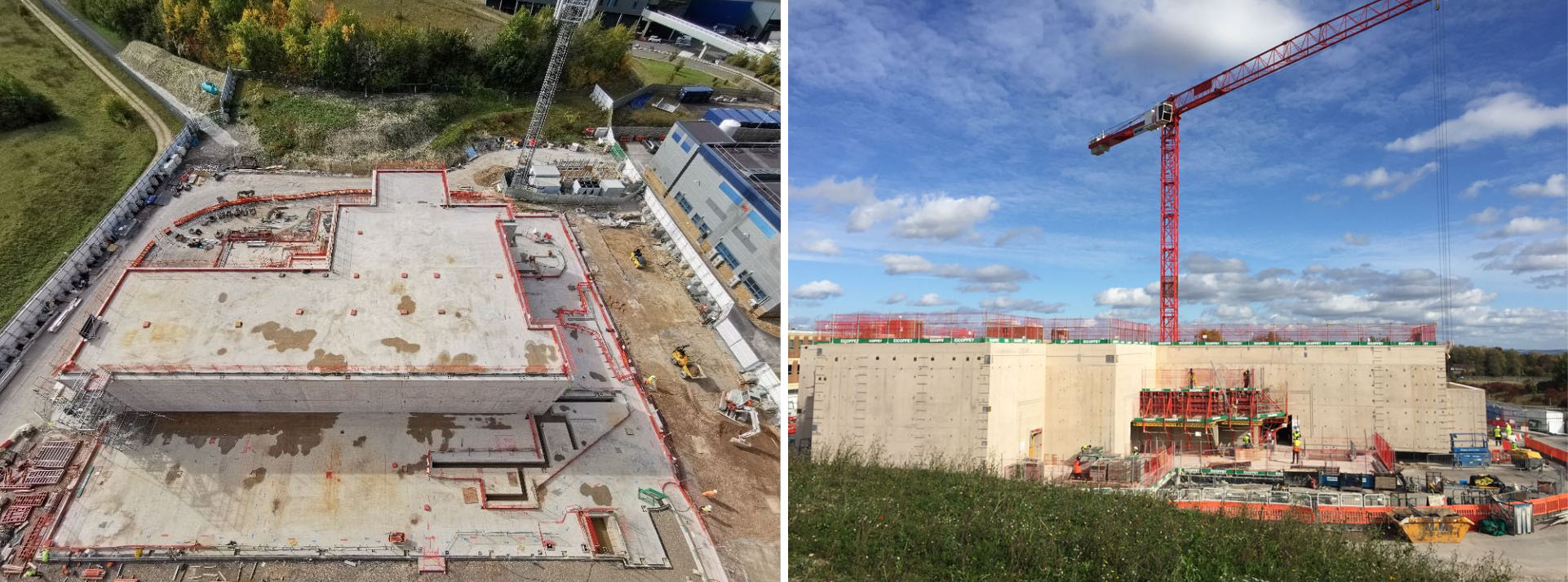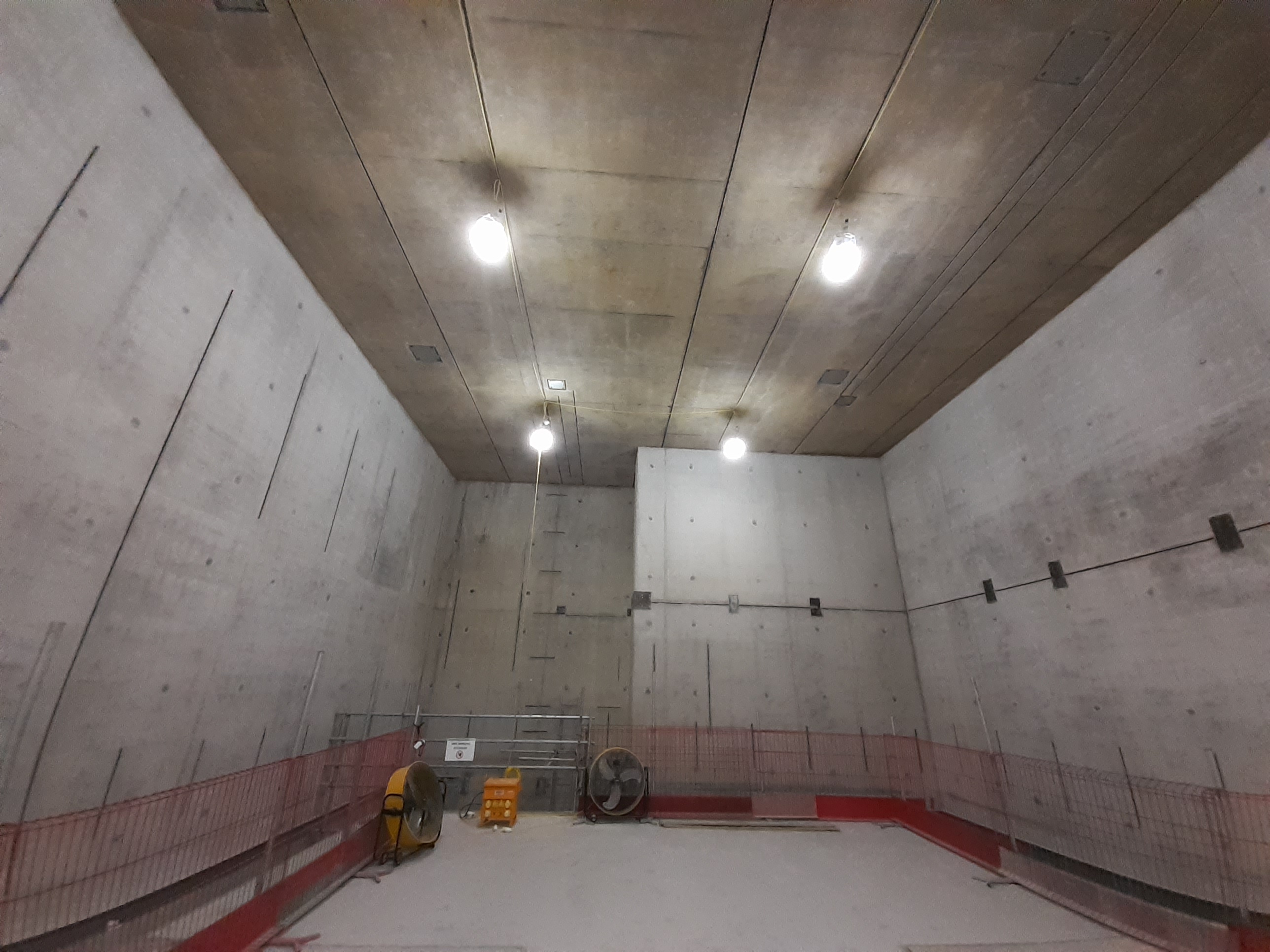Designed and hosted by the UK's Central Laser Facility (CLF) to drive forward scientific understanding of laser-driven accelerators and sources, EPAC is funded by the UK government through UK Research and Innovation and partially the MoD. It is located at the Science and Technology Facilities Council's (STFC) Rutherford Appleton Laboratory on the Harwell Campus.
EPAC is a new state-of-the-art high repetition laser-driven imaging facility that includes two experimental areas with concrete walls 2.5 metres thick, and a third experimental area with 2m thick walls. These areas are all 8 metres tall. The large wall thickness is required to provide shielding for high energy experiments undertaken within the facility.
EPAC will image objects ranging from a piece of bone to complex working structures, like an engine in 3D at ultra-high contrast. These images will allow industrial and scientific users to explore and better understand both material properties and product performance at previously unreachable levels of detail, leading to better materials and products for end consumers. The facility will be operational in 2025.

Recent photos of EPAC provided by MACE.
7,500m3 of concrete was poured to raise the new building from the ground. To reduce carbon footprint, low carbon concrete, comprising 75 percent Ground Granulated Blast Furnace Slag (GGBS) instead of traditional Portland Cement, was used. This resulted in a 48 percent reduction in carbon footprint, a saving of 1,373 tonnes compared to normal practice.
Professor John Collier, Director of STFC's Central Laser Facility, said:
“EPAC will drive the development and application of a completely new class of compact accelerators and advanced sources of radiation based on lasers. We expect this to lead to a step change in a number of fields, for example the rapid, 3D imaging of complex or moving structures, or systems under load like engines or turbines.
We've reached a very significant milestone for EPAC. I am delighted that this has been achieved on schedule whilst adhering to the necessary coronavirus controls, such as social distancing. This is a great credit to our construction partners, Mace."

Photo of inside the EPAC building provided by MACE.
Experiments at EPAC will reach temperatures hotter than 50 million degrees Celsius, hotter than the centre of the sun. A single flash from the laser will be 1 quadrillion watt and its instantaneous output will be 10,000 times more powerful than the output of the UK national grid.
Mace, STFC's construction partner, hold delivery responsibility for the building that will house the new facility.
Robert Cocks, Project Director EPAC, Public Sector Construction at Mace, said:
“We're proud to work on such an ambitious and unique project, supporting our client's ambition in driving sustainable concrete solutions. EPAC has one of the most technically challenging and complex concrete structures in Europe in 2020 and the result is testament to the strong commitment and expertise of everyone involved.''
Funding is provided through the Government's Strategic Priorities Fund (£71.2 million), with an additional investment of £10 million from the Ministry of Defence, and forms part of the UK Government's commitment to significantly boost the funding of research and development in the UK.
The £830million Strategic Priorities Fund (SPF) supports high quality multidisciplinary research and development priorities and is delivered through UK Research and Innovation.
